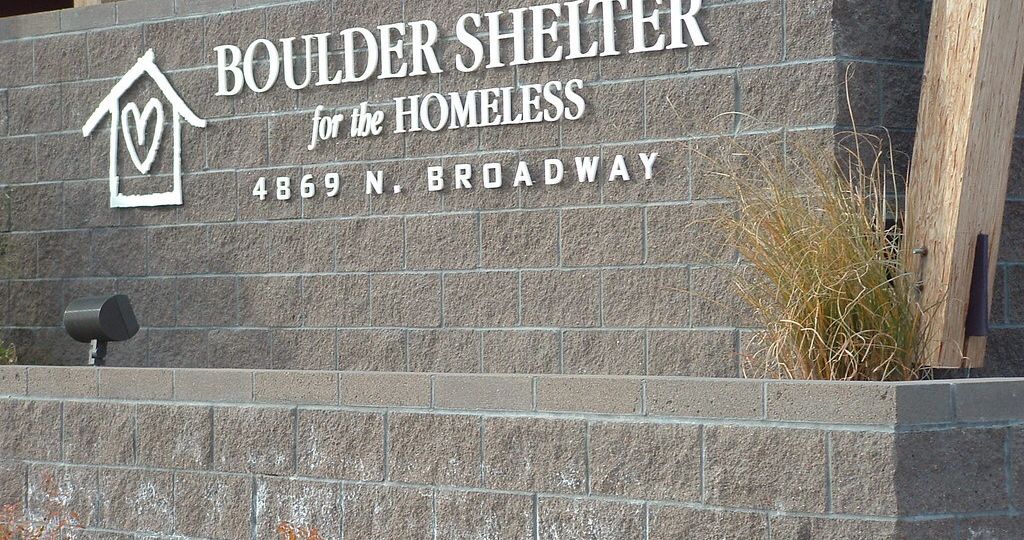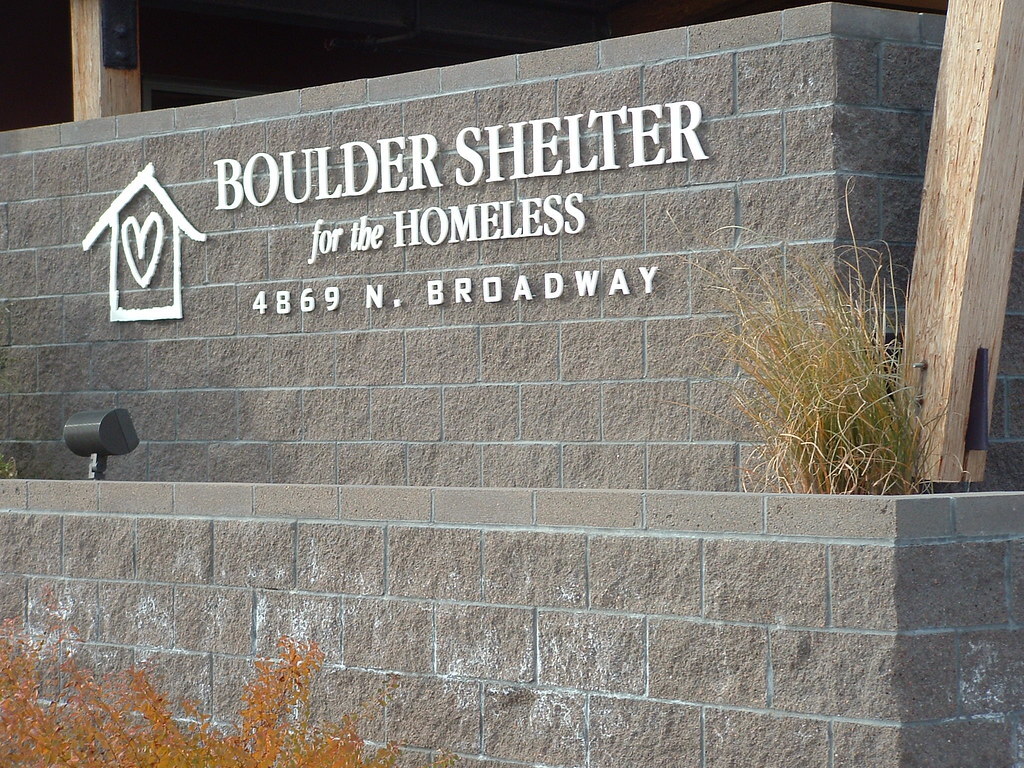
The impacts of COVID-19 on the unhoused community in Boulder

The demographic of the University Hill neighborhood in Boulder, Colorado varies from families and college students to the homeless individuals that reside on the streets and under bridges. Many Boulder residents have witnessed the local institutions and community around us adapting to a new normal in a COVID-19 world; the unhoused community and homeless shelters have not been exempt from these adaptations.
The Boulder Shelter for the Homeless has been housing unsheltered individuals in Boulder since 1982. Greg Harms, CEO at Boulder Shelter for the Homeless, says their focus is getting their members into stable housing.
Throughout the COVID-19 pandemic, the shelter remains unwavering in providing their services, and has worked closely with Boulder County Public Health to ensure the shelter would not close.
The shelter offers two programs to their members: the overnight shelter and a housing program. The overnight shelter that once housed up to 160 people per night, has reduced their capacity to 140 per night, to accommodate for social distancing. In addition to this other COVID-19 safety measures such as mask-wearing have been implemented.
As a private non-profit, the shelter relies on funding from the City of Boulder and the county. Harms says the City of Boulder has played a large role in the shelter’s success and their ability to stay open despite challenges they have faced throughout the pandemic.
By summer, Harms says they shut down the kitchen. “We didn’t want more people coming into the facility and bringing the virus,” he says. Before the pandemic began, volunteers were essential to the shelter. With no volunteers, keeping the kitchen open was not feasible.
Harms say they have transitioned to providing sack lunches to those staying at the shelter. Additionally, restaurants in Boulder often cater meals.
As for those who have moved into stable housing, Harms says, “We line them up with the local food bank if necessary and help them get the food and be able to prepare it for themselves.”
Vicki Ebner, the Homelessness Policy Manager for the City of Boulder, works closely with Harms at Boulder Shelter for the Homeless. She says the city also collaborates with Homeless Outreach Providing Encouragement (HOPE), located in Longmont, as well as Boulder Bridge House, Mother House and other domestic violence shelters located in Boulder County.
The cities of Boulder and Longmont created Homeless Solutions for Boulder County (HSBC), which launched as a countywide approach to homelessness in October 2017. This partnership proved beneficial when the COVID-19 virus arrived in Boulder in March 2020, aiding homeless shelters in their mission.
Congregate living in homeless shelters are not ideal circumstances during a pandemic. Not only was the risk of COVID-19 super-spreading high, but many individuals living in shelters were considered high risk due to underlying health conditions.
Like most citizens, Harms says that when the pandemic began in March, “We weren’t really sure what was going on.” First, Ebner says, the City of Boulder set up the COVID-19 Relief Center (CRC) on March 20, 2020.
The CRC provides a place to stay, medical care and food, provided by Boulder Bridge House, to anyone who tests positive for COVID-19 or is experiencing symptoms. Before entering the shelters, each individual must go through a series of screenings, including temperature checks and an assessment for potential symptoms of COVID-19. If there is a concern of an individual being positive for the virus, they are sent to the CRC. Harms notes, the CRC has helped keep the virus out of local shelters.
Optional COVID-19 testing has also helped slow the spread within shelters. Boulder County Public Health provides twice-a-week testing to all individuals at the shelters.
In addition, Ebner says that the city arranged a non-congregate housing program with FEMA to allow a number of hotel rooms, reserved for frequent shelter users, with specific COVID-19 underlying conditions. Currently, there are 25 rooms reserved, but the City of Boulder has the ability to increase the number of rooms if necessary during severe weather conditions. This alleviates the stress put onto shelters when capacity is limited and ensures that they will not have to turn away those who need a place to stay.
Mental health of the homeless remains a great concern to the city. Ebner says this was the driving force behind the Boulder Targeted Homeless Engagement Referral Effort (Be There).
Be There is a program that pairs unsheltered individuals with mental health professionals, someone with experience in homelessness, and someone who has lived experience of homelessness, to help them take care of themselves, while providing them with whatever they may need to help slow the spread of COVID-19 in the unsheltered population.
Both Harms and Ebner believe COVID-19 has made homelessness more visible in the City of Boulder. Harms notes the potential of COVID-19 to, “Increase people without a home, but our numbers haven’t changed that significantly.”
Ebner notes that the jail system’s response to COVID-19, releasing low-level offenders, may have increased homelessness. She also notes there is an inherent fear of being around a lot of people during this pandemic. As a result, individuals who were engaging with shelters may not be now.
Thus, Ebner says the next big push is to get the homeless vaccinated. She says shelter staff will be vaccinated soon, as they fall in phase 1B.4. However, getting the homeless vaccinated is a tough feat.
Ebner explains there is difficulty with getting a second shot administered. In discussions she has been a part of, the one-shot Johnson and Johnson vaccine seems to be the best option for people who are unsheltered compared to a vaccine with multiple doses.
In the calendar year of 2020, Harms says Boulder Shelter for the Homeless made 100 successful diversions, the first attempt to get someone out of homelessness through reconnecting individuals with their family or support system. Additionally, the shelter’s housing program moved 120 people back into stable housing.
Despite the many hardships faced during the pandemic, homeless shelters and the City of Boulder have developed innovative new programs, with the same goal in mind: to provide stable housing to the unsheltered.

